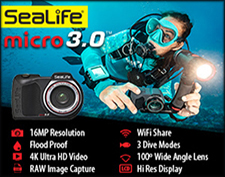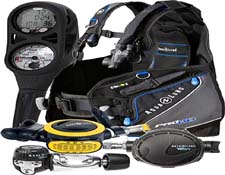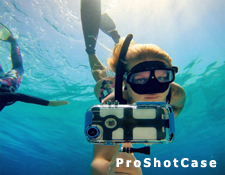

|


|
 |
 |
 |
 |
 |
 |
 |
 |



 Almost all of the Galapagos Islands are preserved as a national park. A truly unique cluster of twenty volcanic islands, this internationally acclaimed dive destination lies in the Pacific just west of Ecuador, South America. Best known for Charles Darwin’s visit in 1835, the Galapagos Islands have become a vital international center for conservation and science. Located at a major intersection of several ocean currents, these islands are home to a staggering array of marine life, nearly 20 percent of which is found nowhere else. It’s possible to have whale sharks circle around you and see schools of hammerhead sharks along with sea lions, penguins and marine iguanas. The water can be cool and the current wicked, but it’s all part of the experience. While land-based dive and snorkeling adventures can be arranged, live aboards allow divers to reach the more distant sites in comfort. On land, you’ll definitely want to see the giant tortoises and the blue-footed and red-footed boobies nesting on the beach. Great Dives El Arco, Darwin Island – This site could well show up on anyone’s list of the world’s top 10 dive sites. Divers regularly encounter schooling hammerheads, whale sharks and spotted eagle rays along with prowling Galapagos and silky sharks. It’s accessible only by liveaboard and one dive strategy is to simply hold your position underwater and let the pelagic show cruise by. El Arenal, Darwin Island – Darwin’s Arch is a distinctive stone arch above the water and this dive site slopes off the arch. The site abounds with marine life. Big-eye jacks along with hammerhead, blacktip and whale sharks all frequent the area. Roca Redonda, Isabela Island – Off the north coast of Isabela, this dive site is the tip of an underwater volcano that rises from the sea floor and emerges as an island. You’ll find Galapagos sharks, schools of hammerhead sharks and barracudas. As you dive around the rocks and pinnacle, you’ll probably be accompanied by sea lions and may find sea horses in the shallows. Cape Douglas, Fernandina Island – This dive site is a great spot to watch penguins “fly” past. Done as a drift dive, you can also see fur seals and Galapagos sea lions mingling with munching marine iguanas. Pitt Point, San Cristobal Island – This dive site is an exposed rock at the most northeasterly point of the island. You’ll likely bump into schools of snapper, grunt and jacks. You may also see diving boobies while underwater. Camaño Islet, Santa Cruz Island – This is a usually calm spot outside Academy Bay that allows you to see groupers, batfish, sea horses, sea lions, and sharks. You may get lucky and spot marine iguanas as they dive beneath the waves in search of food. Dive Summary Visibility – Although 30 metre/100 foot visibility is not unheard of, it’s usually 10-20 metres/30-70 feet. Visibility depends to a great extent on the season and amount of plankton in the water. Water Temperature – Temperatures range from 20-28°C/71-85°F depending upon site and island, and whether or not currents bring in cooler water. Weather – In this highly variable climate, the hot and rainy season is from December to June, with high humidity and average temperatures of 26-30°C/79-86°F. From June to November, expect cool winds and an occasional light misty drizzle. Temperatures average 20-24°C/68-75°F during the day and are lower at night. Diving is possible all year. Featured Creatures – With treasures that include three species of hammerhead shark, marine iguanas, blue-footed boobies, giant land tortoises and a few finches for every island, the list of must-see animals is simply staggering. Fur seals and sea lions, manta rays and giant schools of pelagic fish are also all highlights here. July to November is the peak season for whale sharks that prowl the waters off Wolf and Darwin Islands. Currents – In some areas, currents can be very strong and surface conditions very choppy. Descending currents may be encountered at some sites along vertical walls. Recommended Training – Due to sometimes challenging dive conditions, it’s advisable to be at least a PADI Advanced Open Water Diver. Taking the PADI Drift Diver course is highly recommended. The AWARE – Fish Identification course will help you understand the variety of fish you’ll encounter and the PADI Digital Underwater Photographer course will allow you to capture lasting memories of what you see. Source - PADI |
| DiveGuide.com Scuba Diving Vacations & Dive Holidays - Book direct dive travel with scuba diving operators, resorts, dive liveaboard yachts and dive travel representatives worldwide. We provide free scuba diving information for the traveling diver on vacation and holiday in and to scuba diver destinations around the world. |












|